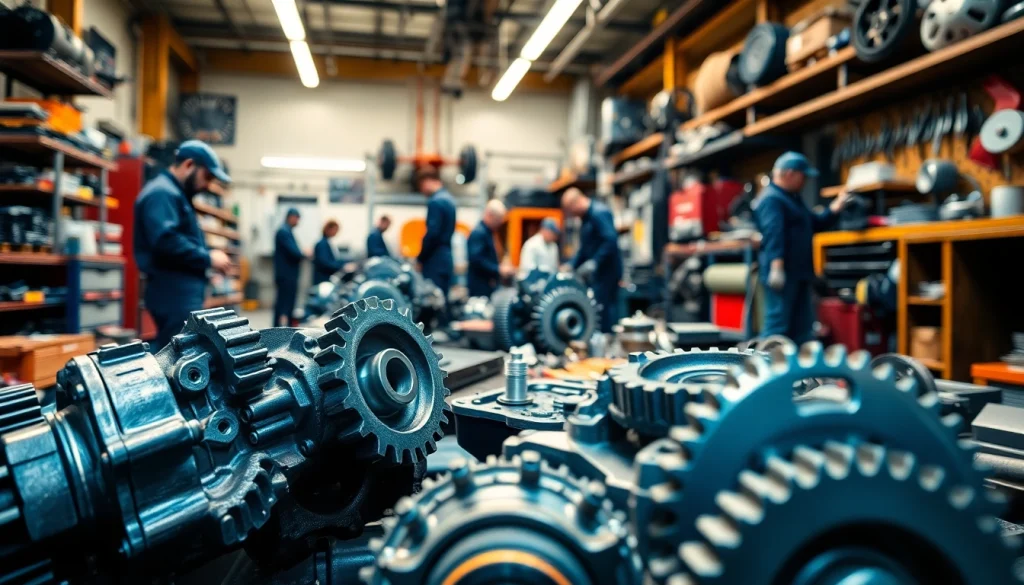Understanding Spare Parts: What You Need to Know
The Definition and Importance of Spare Parts
Spare parts are crucial components used to replace failed or degraded parts in machinery and vehicles, ensuring their optimal functionality. In essence, these parts are designed to maintain, restore, or enhance performance, making them indispensable for various industries including automotive, aerospace, and manufacturing. The availability of quality spare parts directly influences the efficiency of operations, reducing downtime and repair costs.
Common Types of Spare Parts in the Automotive Industry
The automotive industry is one of the largest users of spare parts, with various components falling into diverse categories. Key types of spare parts include:
- Engine Parts: Includes pistons, crankshafts, and cylinders that are integral to an engine’s operation.
- Transmission Parts: Elements such as gears, clutch plates, and bearings that facilitate the vehicle’s movement and power transfer.
- Braking System Parts: Includes brake pads, discs, and calipers necessary for safe stopping.
- Suspension Parts: Components that maintain vehicle stability, such as shock absorbers and springs.
- Electrical Parts: Includes batteries, alternators, and wiring necessary for various vehicle functions.
How Spare Parts Affect Overall Vehicle Performance
The condition and quality of spare parts significantly affect vehicle performance. Poor-quality or incompatible parts can lead to various issues, including diminished fuel efficiency, mechanical failures, and safety hazards. Regular maintenance and timely replacement with high-standard spare parts can enhance efficiency, prolong lifespan, and ensure safety.
The Challenges of Sourcing Spare Parts
Identifying Reliable Suppliers for Spare Parts
The process of sourcing spare parts can be complicated due to numerous suppliers claiming to provide the best quality. Identifying reliable suppliers involves researching their reputation, assessing product quality, and reviewing customer testimonials. Certifications from organizations such as ISO are also indicators of a supplier’s credibility.
Assessing Quality and Compatibility of Spare Parts
When sourcing spare parts, it is essential to assess both their quality and compatibility with existing systems. Using OEM (Original Equipment Manufacturer) parts is typically recommended, as they guarantee compatibility and reliability. In contrast, aftermarket parts can vary significantly in quality, making due diligence paramount.
Overcoming Inventory Management Issues
Inventory management poses another challenge in sourcing spare parts. Holding excessive stock ties up capital, while inadequate inventory can lead to downtime during repairs. Adopting a Just-In-Time (JIT) inventory system can optimize stock levels and minimize waste, ensuring that spare parts are available when needed without excessive overstocking.
Best Practices for Using Spare Parts in Repairs
Steps to Ensure Proper Installation of Spare Parts
Proper installation is vital for the effective functioning of spare parts. Here are the steps to ensure correct installation:
- Read Manufacturer Instructions: Always refer to the installation guide provided by the manufacturer.
- Use Quality Tools: Ensure that the right tools are used to avoid damaging parts during installation.
- Verify Compatibility: Double-check that the new parts are compatible with the vehicle before installation.
- Conduct Tests Post-Installation: After installation, test the vehicle to ensure everything operates smoothly.
Tips for Maintaining Spare Parts for Longevity
To maximize the lifespan of spare parts, regular maintenance is crucial. Here are tips for effective maintenance:
- Perform regular inspections to identify wear and tear early.
- Utilize quality lubricants and protective coatings when applicable.
- Keep spare parts clean and properly stored when not in use.
- Educate personnel on proper handling and installation to prevent damage.
Understanding Warranties and Returns on Spare Parts
Many suppliers offer warranties on spare parts, which can range from a few months to several years. Understanding warranty terms is essential before purchase. It is equally important to know the return policy in case the part is unsuitable or defective to avoid losses.
Innovations in Spare Parts Technology
3D Printing and Its Impact on Spare Parts Availability
3D printing technology has revolutionized the manufacturing of spare parts, allowing for rapid prototyping and production. This innovation enables manufacturers to produce complex parts on-demand, significantly reducing lead times and costs. Companies can now create spare parts tailored to their specific requirements without maintaining large inventories.
Smart Spare Parts: The Future of Automotive Repair
The advent of IoT (Internet of Things) in spare parts has led to the development of smart components that can communicate with one another. These parts can alert users about potential failures before they occur, enabling proactive maintenance and reducing downtime.
Repair vs. Replacement: Cost-Benefit Analysis of Spare Parts
When faced with a malfunctioning part, a decision must be made whether to repair or replace it. Conducting a cost-benefit analysis that considers factors such as the cost of the part, labor, and potential impact on performance can guide the decision. Often, replacing certain critical components can lead to long-term savings by preventing further damage.
Evaluating Spare Parts Suppliers: Key Metrics
How to Compare Pricing for Spare Parts
Pricing for spare parts can vary widely depending on sources. To compare pricing effectively:
- Research multiple vendors to attain a broad understanding of standards.
- Consider the total cost of ownership, including shipping and potential installation fees.
- Look for discounts on bulk purchases or membership discounts offered by suppliers.
Reviewing Customer Service and Support from Suppliers
Good customer service is a vital factor when selecting a spare parts supplier. Consider factors such as response time, support availability, and problem resolution effectiveness. Suppliers with robust customer support significantly enhance the purchasing experience.
The Role of Reviews and Ratings in Choosing Spare Parts
Customer reviews and ratings can provide insights into the popularity and reliability of spare parts. Analyzing reviews from various platforms helps gauge overall satisfaction, efficacy, and durability, guiding informed choices during procurement.
You may also like
-
Cómo Comprar IPTV: Guía Completa para Disfrutar de Entretenimiento Ilimitado
-
High-Quality Blank Hoodies for Customization and Comfort
-
Fresh and Affordable Flower Delivery Doreen for Every Occasion
-
Las Mejores Opciones para Comprar IPTV: Guía Completa
-
Stunning Evening Dresses for Every Elegant Occasion
